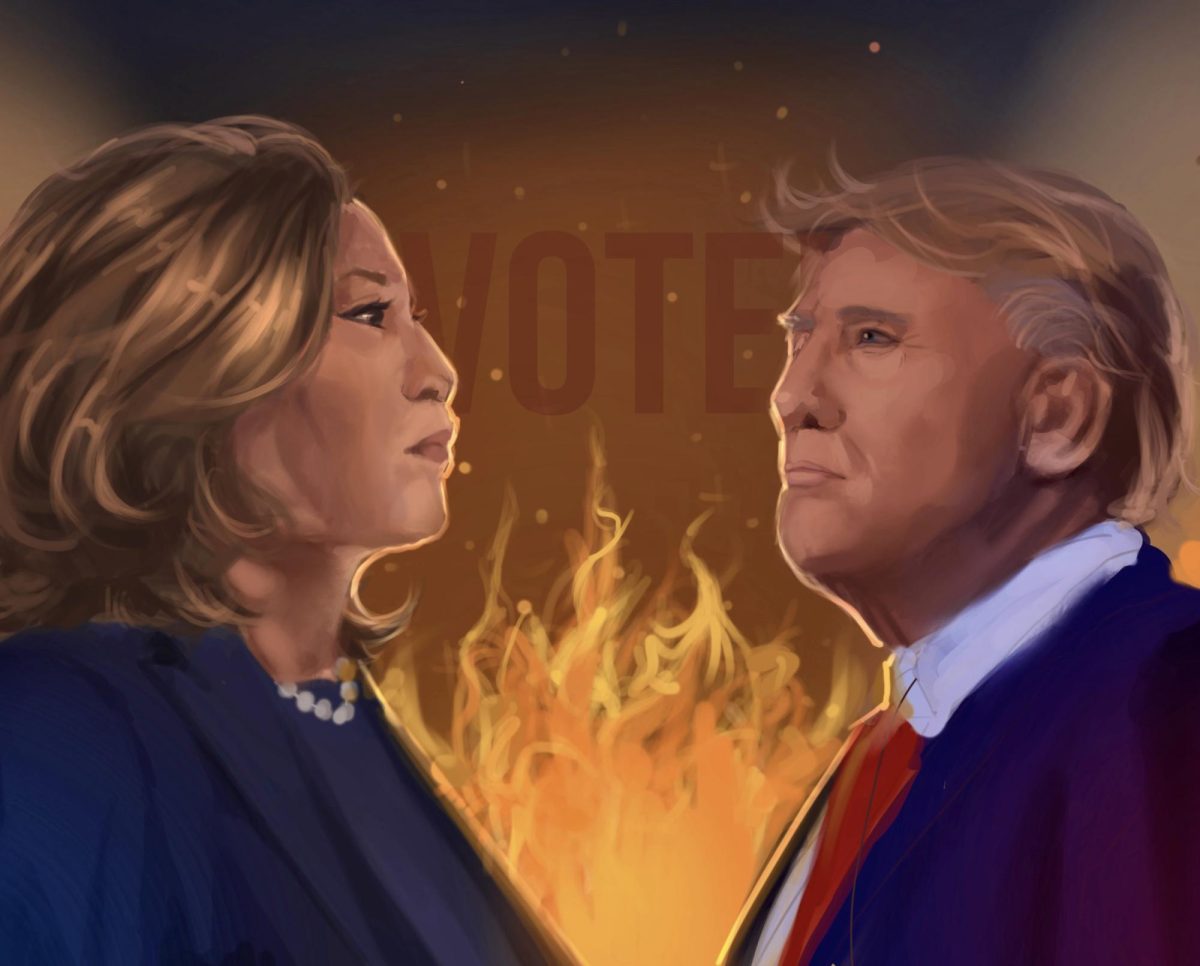The 2024 Presidential election has been unlike any other. Even with her comparatively short campaign, Vice President Kamala Harris has raised over $1 billion, overwhelming most former presidential candidates. What sets Harris apart from other candidates? Her masterful marketing campaign, capturing the attention of young, often underrepresented, voters.
Harris’campaign strategy is not unheard of. She centers her campaign around herself, rather than putting her policy decisions at the forefront of her campaign. She makes people vote for her because of her. Most other modern presidents attempt this same style of campaign, emphasizing their background and personal achievements rather than their goals for the future. Kamala’s campaign aims to capture a new voter base: Gen Z.
Most of Gen Z has heard of Charli XCX’s album “brat” after it took the internet, especially TikTok, by storm this past summer. You couldn’t go on TikTok for more than 5 minutes without seeing a “how to have a brat summer” video or an outfit check of someone covered in neon green. I didn’t expect a presidential candidate to engage with something such as brat summer, but Harris jumped on it right away. The first video promoting her campaign used a tweet from Charli XCX stating “Kamala IS brat”, adopting the neon green/arial font combination that graces the album’s cover. Soon, Harris became synonymous with “brat summer”, successfully combining politics with the interests of the younger generation. Generally, younger people are more apprehensive about voting, with older generations dominating the polls. Additionally, these older voters are likely to vote Republican, further necessitating Harris’ need to capture these voters. A candidate’s ability to invigorate young people to vote can determine the outcome of the election.
Once summer ended, Harris’ campaign didn’t back down. They just changed their focus. After capturing the attention of young voters through accessible trends that made Harris seem “relatable”, they began to push their policy agenda. Instead of watching Harris dancing to “Apple,” consumers were shown clips from Harris’ rallies, or embarrassing clips of former President Donald Trump stating things Harris’ voters didn’t agree with. The campaign took the offensive, attacking Trump for all he’s worth and making Harris’ the only viable candidate. More recently, they’ve been belittling him, stating things like “He switches up his positions every week; girl, he’s not a candidate… he’s a Crumbl Cookie.” These wild statements attract voters purely through shock value. After taking a bold step in a new direction, the Harris marketing campaign returned to traditional marketing with a new demographic of voters in hand.
It seems like this strategy has worked, as many Trump-leaning swing states have swung over to the Democratic party through Harris’ campaign. For example, according to Emerson College Polling, Trump was leading by 3% in Michigan right before Harris became the democratic nominee. Now, according to NewsNation, Harris is leading by 0.8% in Michigan. These might be close margins, but keep in mind that Harris only had 3 months to change these state’s minds.
For many people, including myself, Harris’ social-media forward marketing strategy has made us excited about politics. Her use of memes and trends makes politics accessible, combining it with already known internet culture. In an election as fraught with controversy as this one, we need some humor. I believe that the general public doesn’t have the time to sit around watching the news and reading articles to get political information. Most don’t have the interest either, with political efficacy reaching a low as young people continue to be dissatisfied with the government, believing it has neglected their future. The campaign’s fun and uncomplicated approach to politics provides a jumping-off point for youth, empowering them to further research policy while keeping in mind the positive image of Harris that her social media presence has created. In no scenario should one get all of their political data from social media, but its use as a rapid form of communication helps to increase interest, and spread Harris’s message to those who might not otherwise see it. Even a small tiktok can spark someone’s interest in politics, and embolden them to take action for the future which they so deserve.



